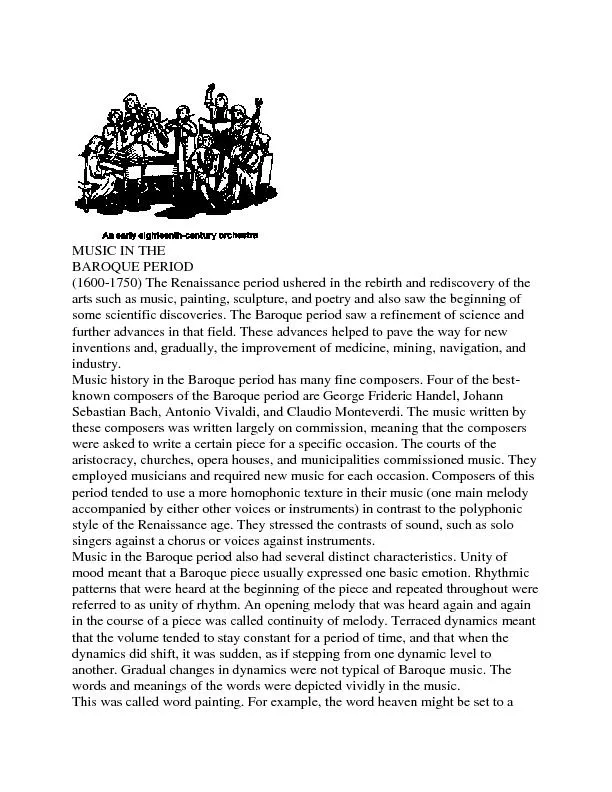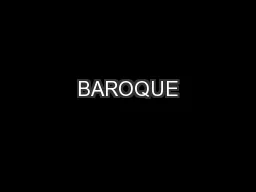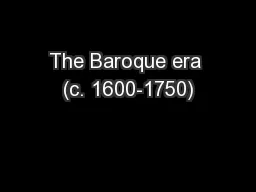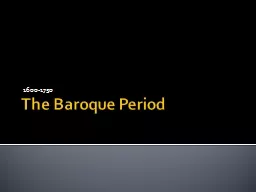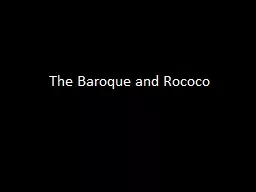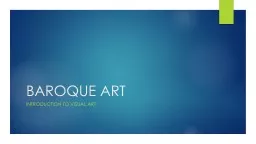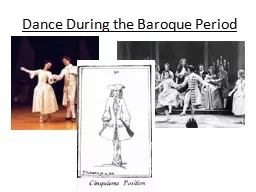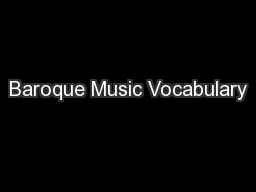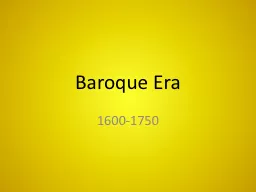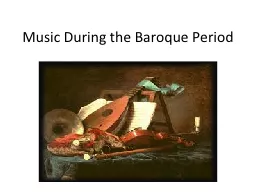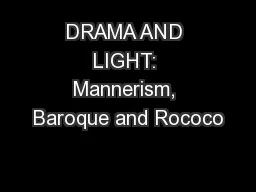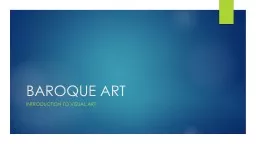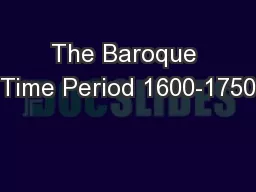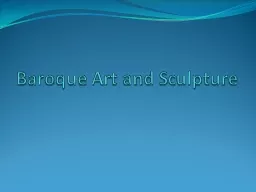PDF-BAROQUE PERIOD
Author : kittie-lecroy | Published Date : 2016-08-21
MUSIC IN THE 1600 1750 The Renaissance period ushered in th e rebirth and rediscovery of the arts such as music painting sculpture and poetry and also saw the beginning
Presentation Embed Code
Download Presentation
Download Presentation The PPT/PDF document "BAROQUE PERIOD" is the property of its rightful owner. Permission is granted to download and print the materials on this website for personal, non-commercial use only, and to display it on your personal computer provided you do not modify the materials and that you retain all copyright notices contained in the materials. By downloading content from our website, you accept the terms of this agreement.
BAROQUE PERIOD: Transcript
Download Rules Of Document
"BAROQUE PERIOD"The content belongs to its owner. You may download and print it for personal use, without modification, and keep all copyright notices. By downloading, you agree to these terms.
Related Documents

